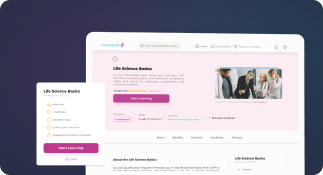Audit Observation
Definition
An Audit Observation refers to a documented finding made during an inspection or audit, indicating a deviation from regulatory requirements, internal procedures, or industry best practices. In the pharmaceutical and life sciences industries, such observations are critical indicators of potential quality deficiencies and compliance issues that must be addressed promptly to maintain regulatory approval and ensure product safety.
Detailed Explanation
Audit Observations play a vital role in the pharmaceutical, life sciences, and regulatory sectors, serving as early warning signals for non-compliance or gaps in quality systems. They are typically issued by regulatory agencies such as the U.S. Food and Drug Administration (FDA) following facility inspections or by internal and third-party auditors during routine or for-cause audits.
Purpose of Audit Observations
The primary purpose of an audit observation is to highlight areas where an organization is not fully compliant with applicable regulations, such as Good Manufacturing Practice (GMP), Good Clinical Practice (GCP), or Good Laboratory Practice (GLP) standards. Addressing these observations helps organizations:
- Enhance product quality and patient safety
- Maintain regulatory compliance
- Prevent enforcement actions, such as Warning Letters or Consent Decrees
- Promote continuous improvement in operational processes
Types of Audit Observations
Audit observations can vary in severity and are often categorized as:
- Minor: Observations that do not pose an immediate risk to product quality or patient safety but require correction.
- Major: Significant deviations that could potentially impact product quality, data integrity, or patient safety.
- Critical: Severe issues that present an immediate risk and require urgent remediation.
Context of Use: FDA 483 and Other Regulatory Findings
One of the most recognized forms of audit observation is the FDA Form 483, “Inspectional Observations.” When FDA inspectors identify conditions that may constitute violations of the Food Drug and Cosmetic (FD&C) Act and related Acts, they issue a Form 483 to the inspected establishment. Common examples of observations noted on an FDA 483 include:
- Failure to adequately investigate deviations
- Inadequate cleaning procedures
- Poor documentation practices
- Inadequate training of personnel
Responding to Audit Observations
Effective response to audit observations is crucial to demonstrate a commitment to compliance and quality improvement. A robust response typically includes:
- Root Cause Analysis (RCA): Thorough investigation to determine the underlying cause of the observation.
- Corrective and Preventive Actions (CAPA): Development and implementation of actions to correct and prevent recurrence.
- Timely Communication: Submission of a written response to the regulatory agency (e.g., FDA) within the specified timeframe, usually 15 business days for a Form 483.
- Follow-up Monitoring: Ensuring that corrective actions are effective and sustainable through internal audits and reviews.
Best Practices for Managing Audit Observations
Organizations can strengthen their compliance posture by:
- Maintaining a proactive internal audit program
- Training employees on regulatory requirements and quality standards
- Documenting all processes accurately and thoroughly
- Establishing a culture of quality and continuous improvement



